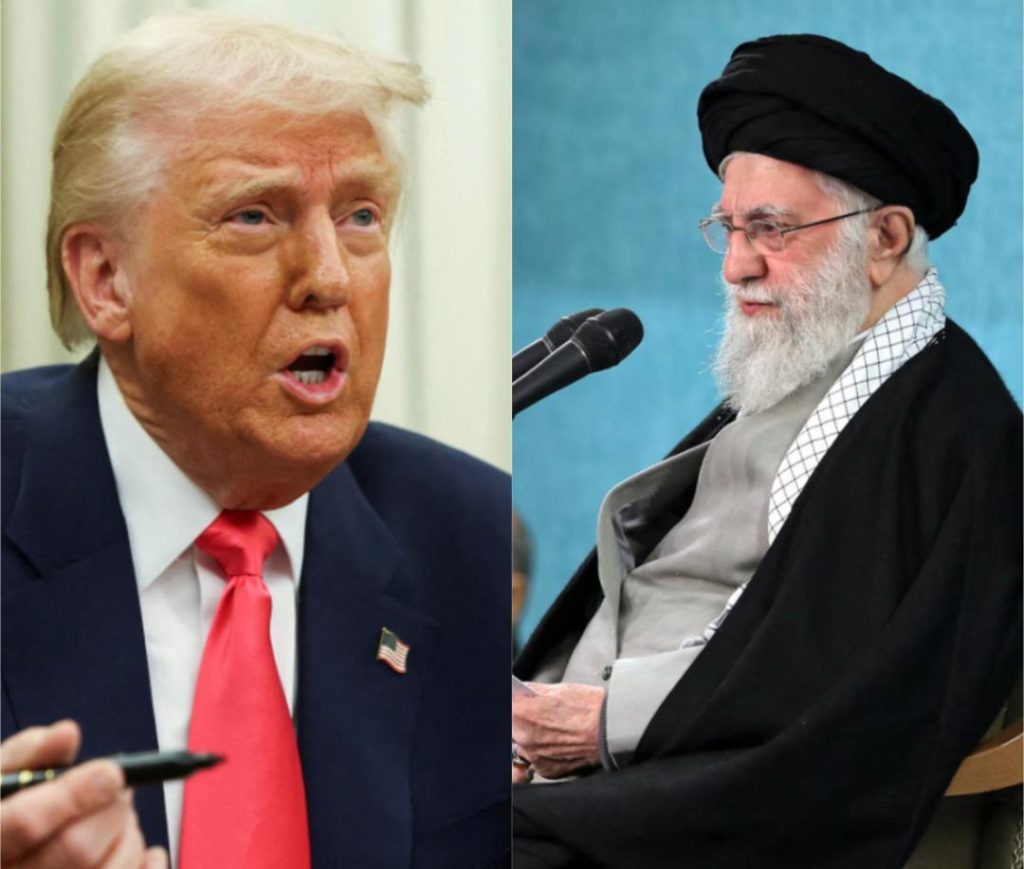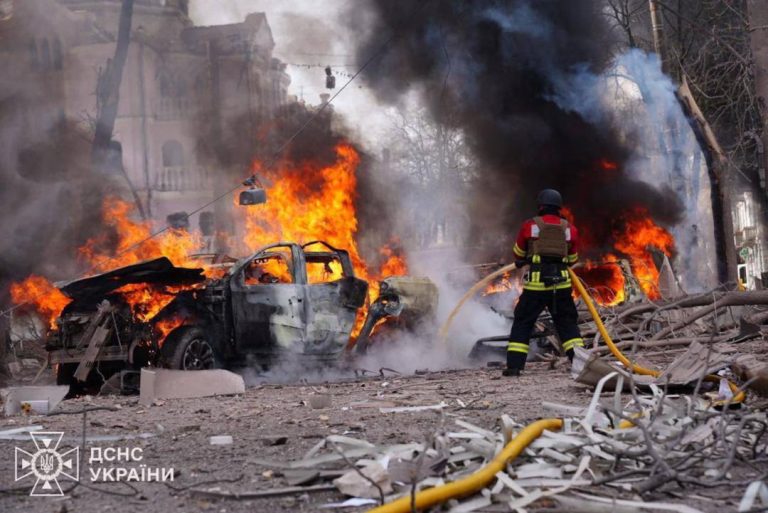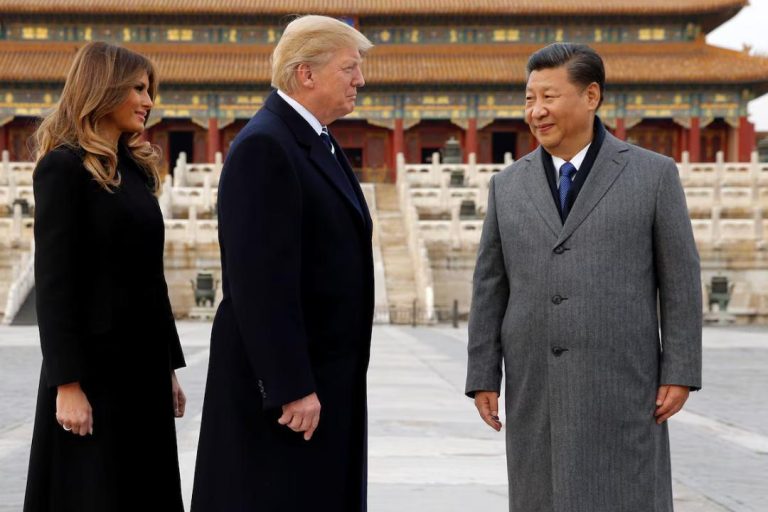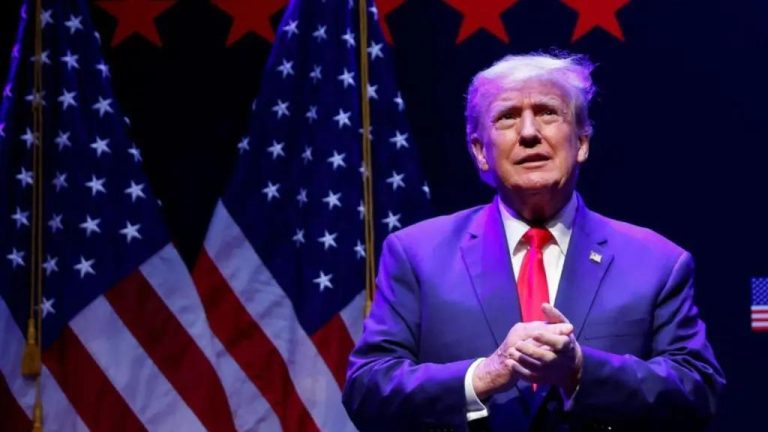
US & Iran Begin Nuclear Talks Days After Donald Trump Threatened Bombing
In a sudden development, Iran and the United States have begun indirect talks in Oman, with Iran confirming the development. This comes just days after US President Donald Trump threatened to bomb Iran if it didn’t agree to a deal on its nuclear program. The talks are taking place under the shadow of regional conflict and heightened tensions between the two nations.
According to reports, Iranian Foreign Minister Abbas Araghchi and US President Donald Trump’s Middle East envoy, Steve Witkoff, are representing both sides in the talks. However, they are communicating in different rooms, with an Omani minister acting as a facilitator to exchange messages.
The talks are seen as a significant development in the long-standing dispute between the two nations over Iran’s nuclear program. The US has been pushing for a deal that would curb Iran’s nuclear activities, while Iran has been resisting, claiming that its nuclear program is solely for peaceful purposes.
The latest development comes after a series of escalating tensions between the two nations. Last week, Trump threatened to bomb Iran if it didn’t agree to a deal on its nuclear program. The US President’s statement was seen as a major escalation in the rhetoric, with many analysts warning of a potential war.
However, it appears that the threat of bombing has not deterred Iran from engaging in talks with the US. The Iranian Foreign Ministry confirmed the talks, saying that they would continue until a deal is reached.
“We are willing to negotiate with the US, but we will not accept any conditions that undermine our national sovereignty,” said Iranian Foreign Minister Abbas Araghchi.
The talks are being facilitated by Oman, which has a history of playing a neutral role in regional conflicts. The Gulf state has previously hosted talks between the US and Iran, and is seen as a trusted mediator in the region.
The indirect talks are seen as a way for the two nations to engage in discussions without direct contact. This approach is often used in international diplomacy, particularly when there are significant differences between the negotiating parties.
The talks are also seen as a way to reduce tensions between the two nations. The US and Iran have been at odds over a range of issues, including Iran’s nuclear program, its support for regional militant groups, and its human rights record.
The latest development comes as a welcome relief to many in the region who have been worried about the potential for war between the two nations. The conflict between the US and Iran has the potential to destabilize the entire region, with many countries having significant interests in the region.
The talks are also seen as a way to engage in a constructive dialogue between the two nations. The US and Iran have a long history of conflict, dating back to the 1979 Iranian Revolution. Since then, the two nations have been at odds over a range of issues, including Iran’s nuclear program and its support for regional militant groups.
However, despite the tensions, there are also many areas where the two nations have a common interest. The US and Iran both have a significant interest in regional stability, and both nations have been working to reduce the threat posed by regional militant groups.
The talks are also seen as a way to engage in a constructive dialogue between the two nations. The US and Iran have a long history of conflict, dating back to the 1979 Iranian Revolution. Since then, the two nations have been at odds over a range of issues, including Iran’s nuclear program and its support for regional militant groups.
In recent years, the US and Iran have been engaged in a series of tit-for-tat actions, with the US imposing sanctions on Iran and Iran responding by seizing oil tankers and downing a US drone. The conflict has also been marked by a series of rhetorical threats, with both sides warning of the potential for war.
However, despite the tensions, there are also many areas where the two nations have a common interest. The US and Iran both have a significant interest in regional stability, and both nations have been working to reduce the threat posed by regional militant groups.
The talks are also seen as a way to engage in a constructive dialogue between the two nations. The US and Iran have a long history of conflict, dating back to the 1979 Iranian Revolution. Since then, the two nations have been at odds over a range of issues, including Iran’s nuclear program and its support for regional militant groups.
In recent years, the US and Iran have been engaged in a series of tit-for-tat actions, with the US imposing sanctions on Iran and Iran responding by seizing oil tankers and downing a US drone. The conflict has also been marked by a series of rhetorical threats, with both sides warning of the potential for war.
However, despite the tensions, there are also many areas where the two nations have a common interest. The US and Iran both have a significant interest in regional stability, and both nations have been working to reduce the threat posed by regional militant groups.
The talks are also seen as a way to engage in a constructive dialogue between the two nations. The US and Iran have a long history of conflict, dating back to the 1979 Iranian Revolution. Since then, the two nations have been at odds over a range of issues, including Iran’s nuclear program and its support for regional militant groups.
In recent years, the US and Iran have been engaged in a series of tit-for-tat actions, with the US imposing sanctions on Iran and Iran responding by seizing oil tankers and downing a US drone. The conflict has also been marked by a series of rhetorical threats, with both sides warning of the potential for war.
However, despite the tensions, there are also many areas where the two nations have a common interest. The US and Iran both have a significant interest in regional stability, and both nations have been working to reduce the threat posed by regional militant groups.
The talks are also seen as a way to engage in a constructive dialogue between the two nations. The US and Iran have a long history of conflict, dating back to the 1979 Iranian Revolution. Since then, the two nations have been at odds over a range of issues, including Iran’s nuclear program and its support for regional militant groups.
In recent years, the US and Iran have been engaged in a series of tit-for-tat actions, with the US imposing sanctions on Iran and Iran responding by seizing oil tankers and downing a US drone. The conflict has also been marked by a series of rhetorical threats, with both sides warning of the potential for war.
However, despite the tensions, there are also many areas where the two nations have a common interest. The US and Iran both have a significant interest in regional stability, and both nations have been working to reduce the threat posed by regional militant groups.
Source:






